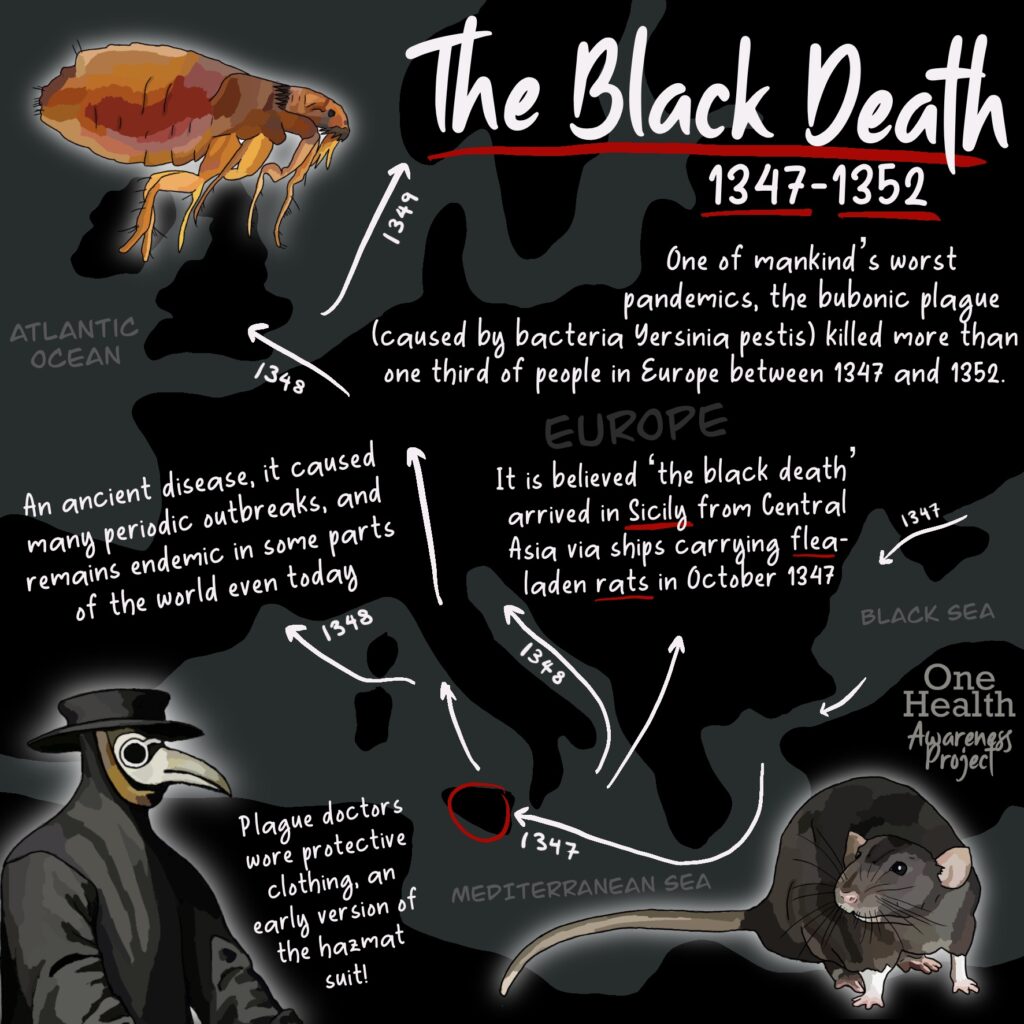
The bubonic plague or ‘the black death’ was an ancient pandemic that killed more than 25 million people during the 14th century. The zoonotic disease was caused by a bacterial agent Yersinia pestis, which is believed to have been carried through Europe by rats and their fleas. The bacteria still causes periodic outbreaks and remains endemic in some parts of the world today. The plague arrived in Sicily in October 1347, most likely from central Asia via ships carrying flea-laden rats, and then spread over Europe during the following 5 years, killing 1 in 3 Europeans. This had huge repercussions, changing the course of history in Europe. In the modern world, plague endemic areas still suffer from outbreaks, for example in Madagascar, the Democratic Republic of the Congo and Peru, however the potential plague ‘ingredients’ (the bacteria, animal reservoir and insect vector) are distributed all over the world. Plague is a disease that usually affects disproportionately vulnerable populations, as it spreads in overcrowded places with poor sanitary conditions. The WHO has deemed plague to be a reemerging disease since the 1990s (Kathryn et. al. 2020)
